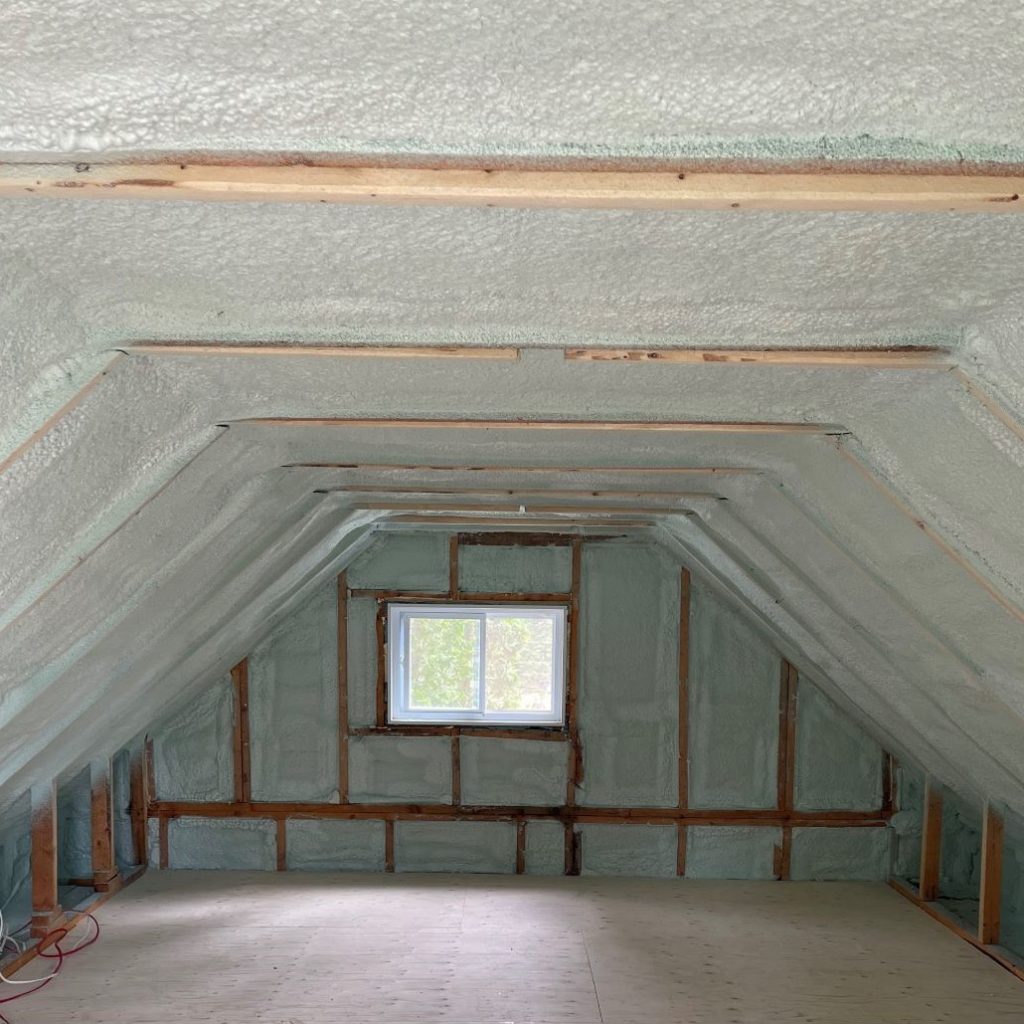The Importance of Ventilating the Attic
Did you know that your house breathes? In order to maintain the air that’s in the attic fresh and dry, the air has to circulate. That’s the roof and soffit ventilator’s role. But why is the attic’s ventilation important, during winter and summer? Why can we find humidity in the attic? And how can we make sure to have an efficient ventilation? Isolation Majeau answers these questions so that you can enjoy the comfort of your home during every season.
Why is Your Attic Vapour Barrier Not 100% Efficient?
In order to ensure your house’s airtightness, you have to avoid piercing the building’s envelope. When we have to drill holes, we must make sure that everything is sealed to keep humidity from getting through the vapour barrier and gets in the attic.
Here are some reasons why your attic isn’t airtight:
– Recesses have been installed, but the holes haven’t been sealed.
– A leaking dryer hose goes through the attic.
– An access hatch to the attic, insulated with mineral wool, lets warm air and humidity through.
– Humid air coming from the bathroom is directed in the attic by a ventilator that’s not airtight.
Discover other reasons why heat losses are often found in the attic.
Why Ventilate During Summer?
Have you ever touched the shingle on the roof during a heatwave? It can become very hot. As a matter of fact, the temperature can reach up to 60 degrees Celsius and more.
This heat that’s imprisoned in the attic heats up the underside of the roof and the shingle. It’s absolutely important to get this heat out by a vacuum effect from the roof ventilation. Furthermore, overheating of the shingle shortens its life expectancy. So, maintaining fresh air in your attic is synonymous to a good ventilation of your attic.
The Importance of Attic Ventilation During Winter
During winter, your house’s air is warm and full of humidity. This humidity is caused by human activity such as showers, cooking and washing. Naturally, the water vapour wants to go dry places. This phenomenon is called vapour pressure. The water vapour can get around a vapour barrier and the insulator if they aren’t sealed properly.
When this humidity gets in the attic, it condensates when in contact with colder elements (below the freezing point) that make up the under-roof. This condensation will transform into water when the temperature gets above zero Celsius during spring. Water droplets will then get on your insulator and can affect the insulating value (R value). In the long run, excessive humidity can provoke mildew and rot. An efficient ventilation of the attic will help you avoid these problems.
How Does a Roof Ventilator Work?
The wind and the air pressure create a vacuum effect. The static roof ventilator sucks the hot air and the humidity present in the attic. Then, since a vacuum is created, the attic fills up with fresh air through the holes in the soffits.
How to Ventilate a House With a Low Roof Pitch?
When a low roof pitch keeps the ventilator from working properly, as it’s often the case with houses that were built in the 1960s and 1970s, there are two solutions.
We can install a soffit composed of 50% of holes, which is a lot more than the standard model. Another alternative for the attic’s ventilation is to create an attic whirlwind by creating an opening in the gables.
Our insulation experts know everything about a building’s envelope. They can help you find other solutions for you to have a comfortable house that will be energy efficient. If you have questions, don’t hesitate to contact one of them.
This article was originally published on April 8, 2021 by François Morissette








